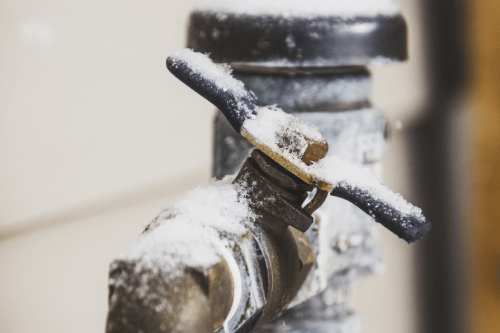How to Protect Pipes from Cold Weather Issues: Essential Tips
How to Protect Pipes from Cold Weather Issues: Essential Tips
Blog Article
Just how do you feel about How to prepare your home plumbing for winter weather?

Winter can wreak havoc on your pipes, specifically by freezing pipelines. Right here's just how to stop it from taking place and what to do if it does.
Intro
As temperature levels decline, the danger of icy pipelines rises, possibly leading to expensive repair services and water damage. Recognizing how to avoid icy pipes is essential for house owners in cold climates.
Recognizing Frozen Pipes
What triggers pipelines to freeze?
Pipes freeze when revealed to temperature levels below 32 ° F (0 ° C) for extended periods. As water inside the pipelines ices up, it increases, putting pressure on the pipe wall surfaces and possibly triggering them to rupture.
Dangers and damages
Icy pipelines can cause water system disturbances, residential property damage, and expensive repair work. Burst pipelines can flooding homes and cause extensive architectural damages.
Signs of Frozen Piping
Recognizing frozen pipelines early can avoid them from bursting.
Exactly how to identify frozen pipes
Seek reduced water circulation from faucets, uncommon odors or sounds from pipelines, and noticeable frost on revealed pipes.
Prevention Tips
Protecting prone pipes
Wrap pipes in insulation sleeves or make use of warmth tape to protect them from freezing temperature levels. Focus on pipelines in unheated or exterior areas of the home.
Heating strategies
Maintain interior rooms properly heated up, particularly areas with plumbing. Open cupboard doors to permit cozy air to distribute around pipes under sinks.
Safeguarding Exterior Pipes
Yard tubes and outside taps
Detach and drain garden pipes before winter. Mount frost-proof spigots or cover outdoor taps with insulated caps.
What to Do If Your Pipes Freeze
Immediate actions to take
If you presume frozen pipes, maintain taps available to eliminate pressure as the ice thaws. Utilize a hairdryer or towels soaked in warm water to thaw pipelines slowly.
Long-Term Solutions
Structural changes
Think about rerouting pipelines away from exterior wall surfaces or unheated locations. Add extra insulation to attic rooms, cellars, and crawl spaces.
Updating insulation
Buy high-grade insulation for pipelines, attic rooms, and wall surfaces. Appropriate insulation assists keep consistent temperatures and decreases the risk of icy pipes.
Verdict
Avoiding frozen pipes needs aggressive steps and quick responses. By comprehending the causes, indications, and preventive measures, homeowners can protect their plumbing during cold weather.
Helpful Tips to Prevent Frozen Pipes this Winter
UNDERSTANDING THE BASICS: WHY PIPES FREEZE AND WHY IT’S A PROBLEM
Water freezing inside pipes is common during the winter months, but understanding why pipes freeze, and the potential problems it can cause is crucial in preventing such incidents. This section will delve into the basics of why pipes freeze and the associated problems that may arise.
THE SCIENCE BEHIND FROZEN PIPES
When water reaches freezing temperatures, it undergoes a physical transformation and solidifies into ice. This expansion of water as it freezes is the primary reason pipes can burst. As the water inside the pipe freezes, it expands, creating immense pressure on the walls. If the pressure becomes too great, the pipe can crack or rupture, leading to leaks and water damage.
FACTORS THAT CONTRIBUTE TO PIPE FREEZING
Low Temperatures: Extremely cold weather, especially below freezing, increases the risk of pipes freezing. Uninsulated or Poorly Insulated Pipes: Pipes located in unheated areas, such as basements, crawl spaces, or attics, are more prone to freezing. Insufficient insulation or lack of insulation altogether exacerbates the problem. Exterior Wall Exposure: Pipes running along exterior walls are susceptible to freezing as they encounter colder temperatures outside. Lack of Heating or Temperature Regulation: Inadequate heating or inconsistent temperature control in your home can contribute to frozen pipes. PROBLEMS CAUSED BY FROZEN PIPES
- Pipe Bursting: As mentioned earlier, the expansion of water as it freezes can cause pipes to burst, resulting in significant water damage.
- Water Damage: When pipes burst, it can lead to flooding and water damage to your property, including walls, ceilings, flooring, and personal belongings.
- Structural Damage: Prolonged exposure to water from burst pipes can compromise the structural integrity of your home, leading to costly repairs.
- Mold and Mildew Growth: Excess moisture from water damage can create a favorable environment for mold and mildew growth, posing health risks to occupants.
- Disrupted Water Supply: Frozen pipes can also result in a complete or partial loss of water supply until the issue is resolved.
WHY CERTAIN PIPES ARE MORE PRONE TO FREEZING
- Location: Pipes located in unheated or poorly insulated areas, such as basements, crawl spaces, attics, or exterior walls, are at higher risk of freezing.
- Exterior Pipes: Outdoor pipes, such as those used for irrigation or exposed plumbing, are particularly vulnerable to freezing as they are directly exposed to the elements.
- Supply Lines: Pipes that carry water from the main water supply into your home, including the main water line, are critical to protect as freezing in these lines can affect your entire plumbing system.
- Underground Pipes: Pipes buried underground, such as those connected to sprinkler systems or outdoor faucets, can be susceptible to freezing if not properly insulated.
https://busybusy.com/blog/helpful-tips-to-prevent-frozen-pipes-this-winter/

Hopefully you enjoyed our piece about Prevent Frozen Pipes . Many thanks for spending some time to read through our post. Sharing is caring. Who knows, you may just be doing someone a favor. We enjoy reading our article about Prevent Frozen Pipes .
Set An Appointment Report this page